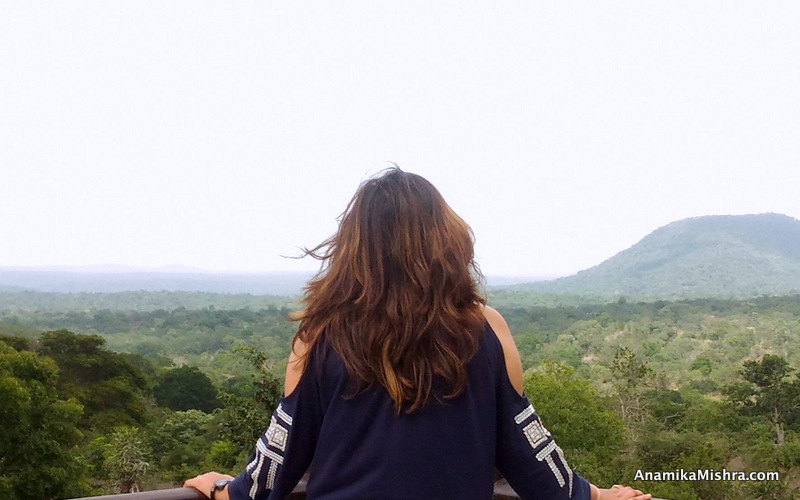As an avid birder, I have to admit that birding expeditions are more fulfilling when you visit the lesser-known and less popular forests. With fewer distractions from tourists or vehicles, there are more chances of spotting some of the most exquisite species of birds. So, when my birding group planned a tour to the New Amarambalam Wildlife Sanctuary & the Reserve Forest, I understood the reason behind such a choice for our annual trip. We are usually used to traveling to national parks and sanctuaries which have been in existence for decades but rarely do we get to know of a wildlife reserve that is recently been established. The New Amarambalam sanctuary is one of them. It is a relatively new wildlife sanctuary or a reserve forest.

Amarambalam – An overview
When I say ‘new’, what I mean is that the wildlife of this region was recently brought under the Protection Act and opened to explorers. The biosphere, of course, has been extant forever.
The forests of Amarambalam lie in the district of Malapuram, near the western border of Kerala. The forest cover is a part of the Nilgiri Biosphere Reserve and spans over 265 sq. km, covering Malappuram, Palakkad, and Nigiri districts.

Since we were traveling in a big group, we had to get a spacious and comfortable tempo traveler on rent in Coimbatore. We took the Mannarkkad – Anakkatti Road, which took us nearly five hours to reach Nilambur, the nearest town. We planned our stay there for the night and head on our birding tour the next morning.
The entire forest sits on one end of the famous Silent Valley National Park and enjoys the same kind of tranquil and misty environment. We started our tour through the dense forests. Our minibus was the only vehicle on the quiet trails. At places, the roads gave way to faded trails. Since there was no official map of the sanctuary yet, I was glad we had rented a reliable cab with an experienced driver in Coimbatore, who knew his way around.

A great birding tour
I had been to other parts of the Nilgiri Biosphere, including the Silent Valley, but this forest appeared a little different. Although a part of the same biome, this was a rare forest, with five distinct vegetation such as grasslands, shola forests, along with evergreen, semi-evergreen and deciduous trees. And each zone had its rich treasure of flora and fauna.
One of our group members had done some research and found out that the forests of Amarambalam housed more than 212 species of birds, of which at least 16 species were restricted ones, 52 species were threatened, and one or two of the most endangered species of Indian avifauna were right here. Usually, I have seen that most bird sanctuaries have a majority population of migratory birds, while the rest are endemic, and it’s the exotic species that make them special. But Amarambalam was different.

Since we are pros in our passion, we make notes on the kind of birds we spot and thanks to a mobile app, we have details of the species that we find. On our tour, we collectively saw at least 10-11 types of woodpeckers, seven varieties of bulbuls and babblers, at least 10 types of flycatchers, with different beak colors, and three kinds of barbets. All these sightings happened on our long hike through the forests. Later, we drove around for a while and headed to the Nedumkayam Rain Forest. It was outside the main sanctuary but the quietest part of this forested area.
Nedumkayam Rain Forest
On our way, we noticed that Amarambalam is not just a bird paradise but also rich in its animal reserve. While you might not be able to see the common animals, like in other forests, you could still find the Nilgiri Langur, Lion-tailed macaque, and ibex (also called the Nilgiri Tahr) in plenty. I consider spotting even these endangered species is an exclusive experience since you can’t find them everywhere. The ibex, though, can be seen in the hilly bluffs, or the grasslands.
We soon the Nedumkayam Rain Forest. Not to be confused with tropical rainforests, this was an area bordering the sanctuary, covered with thick clusters of deciduous trees and shola forests, and dense undergrowth. Narrow rivulets cut through the forests, and the roads were wider and more drivable. We learned from our driver that these forests were home to local tribes, who lived and farmed around the edges. The trip to the rainforest turned out to be quite a surprise. We parked our car near one of the tribal villages and continued walking around. After a point, we reached a hanging bridge over a small stream, where we spotted the famous Malabar grey hornbill and the Nilgiri wooded pigeons.

Overall, it turned out to be an enriching, holistic journey. Never before had we, as a group, managed to see such a huge variety of birds (and animals), in one day!
Also read: Houseboat Stay In Alleppey, Kerala + Photos From My Trip



